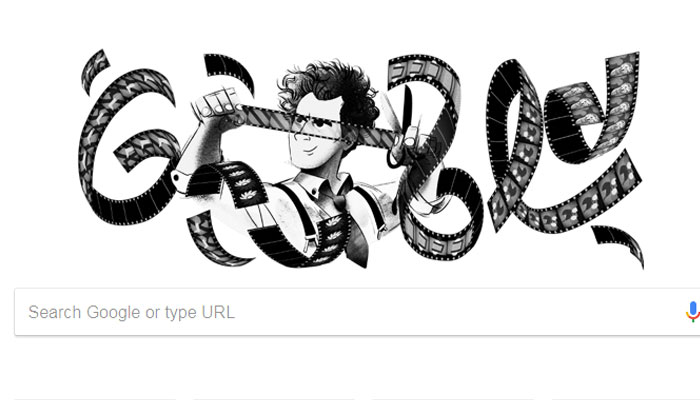TRENDING TAGS :
Google remembers Soviet filmmaker, montage-master Eisenstein
New Delhi: Google on Monday honoured Soviet film director and father of montage in filmmaking Sergei Eisenstein on his 120th birth anniversary with a doodle.
The doodle shows a series of film rolls in movement depicting iconic imagery in some of Eisenstein's films. It is a reminder of his enduring contributions to cinema.
A closer look into the doodle shows sequencing of a number of images in a continuous loop creating the effect of a montage.
The doodle also shows Sergei Eisenstein, holding a film roll and a scissors depicting a cut or an edit.
The Russian genius changed the way films were made as early as in the 1920s.
The avant-garde filmmaker was born on this day in 1898. He left behind a rich legacy that is complex and in many ways, immeasurable.
Film montage is an editing technique that pieces together a series of frames to form a continuous sequence that is used at several defining moments in films -- you can easily recall some of it in "The Godfather", "The Karate Kid", that was refined in the early 20th century by the Soviet director.
Also Read: Jamie Dornan glued wig hair to private parts to impress girls
Born in Latvia, young Eisenstein started off in the footsteps of his father and took up architecture and engineering, he later joined the Red Army to serve the Bolshevik Revolution.
During this time, he developed an interest in theatre and started working as a designer in Moscow.
Eisenstein's films are politically loaded and they galvanised cinema of the former Soviet Union and beyond with their bold narrative approach, stylistic flourishes, dramatic use of cinematography, editing and music, and marriage between ideology and the craft of filmmaking.
"Strike" in 1925, "Battleship Potemkin" (1925), "October" (1928), "Que viva México!" (1930, released in 1979), "Alexander Nevsky" (1938) and "Ivan The Terrible" (1944 and 1958)demonstrate Eisenstein's genius, his contributions to the art of editing through his theories on montage, and his ability to transcend propaganda to create enduring art.
Describing his cinematic vision, Google said, "His films were also revolutionary in another sense, as he often depicted the struggle of downtrodden workers against the ruling class."
He was only 50, when he died following a heart attack on February 11, 1948.
--IANS



